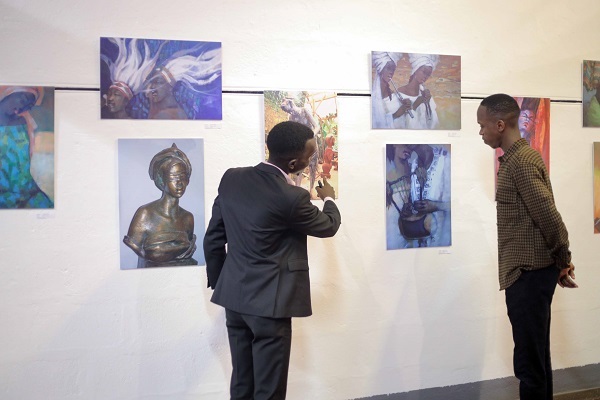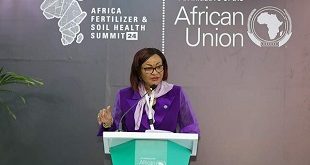
Prints of the artist’s artwork on showcase delved into the subject of an artist who crossed boundaries of artistic practice but still avoided the radical feminist narrative
ART | DOMINIC MUWANGUZI | The memory of Maria Naita, a renown sculptress and painter of her time, still lives on. A recent multi-disciplinary show, Naita Enthroned & Enskied, where the artist’s works were re-produced by Associate Professor Amanda Tumusiime of Margaret Trowell School of Industrial and Fine Art, reverberated the living memory of the artist who used her art to interrogate the life of women as mothers, home-keepers and social activists. It is the latter that mostly underlined her artistic practice within the context of depicting women as equal bread winners of the family and champions of change within their immediate surroundings.
It is upon this background that Tumusiime, a celebrated scholar, artist and feminist activist, found inspiration in her work and became an ardent student of her art- both painting and sculpture-during her post graduate degree and thereafter. Therefore, the exhibition navigated the theme of Naita as a feminist artist and activist more than simply reliving her memory.
Though Naita could have easily stood out as an exceptional artist during her lifetime, evident with the many monumental projects under her name like The Stride Monument, The Kabamba Millitary Monument and Building the Nation in Kigali, Rwanda, her art was about breaking barriers for artists of her gender. The building of these towering commemorative artworks was in many ways a subversion to the stereotype that women cannot perform roles men do.
Traditionally, the art of building sculptural works, often involving laborious exercises like welding, chiselling and drilling hardwood or metal, was a norm for men artists. It is painting that was often reserved for the women because it exerted less energy on the women who naturally have been stereotyped to be a “weaker sex”. Yet still, the genre of painting was generally perceived to be mastered by the male artists which again posed many challenges for women to assert themselves as artists.

Naita’s bold but elegant approach to artistic production definitely silenced this stereotypical thinking. It prompted curiosity and confidence in many young female artists including Tumusiime who was captivated by her bravery but also excellence in a male dominated industry. On the same front, she seemed to disagree with the theme of radical feminism that was being promoted by several women leaders in the country. “Naita was not comfortable with the notion of radical feminism. The type of feminism that make a woman see herself as a man. This is because she was a mother and wife but also such ideology would be in conflict with her religious beliefs,” notes Dr. Angelo Kakande, an Art Historian and Human rights lawyer.
This non-radical feminism was delicately communicated in her work by painting children playing games, women playing music instruments (flute) and women wearing African fabrics- an accentuation to their feminine beauty. “Naita was a fashionista and this is reflected in many of her works where women are wearing Kitengi dresses and head wraps”, says Dr. Tumusiime.
Her sculptural works were often marked with the theme of family: Father, Mother and Child. This can be seen with the Stride Monument where a father and mother are raising a banner while their son walks along with them. Similarly, Building the Nation depict a woman and a man building a structure together. The symbolism of women taking part in these critical activities of society illustrate that women and men can each complement each other in executing day to day roles. More so, the images celebrate the family unit as important facet of society while communicating the contribution such a nucleus institution can make to the development and growth of the country.
This seminal exhibition pays tribute to an artist who crossed many boundaries of artistic practice. Though she was never vocal in speech, her art delicately communicated her feelings and emotions about how women should be perceived and treated in society. With her art, it is obvious that art is an important vehicle to convey vital messages to the community, but also is a tool to document what is in the artist’s immediate surroundings and personal experiences. Hence, Naita came, saw and molded the world with her hands for everyone to experience and learn.
The exhibition which opened with a fashion show, short film (Mother of Earth), poetry performance and book launch showcased for one day at Makerere art gallery, but a virtual show is planned in the coming weeks.
 The Independent Uganda: You get the Truth we Pay the Price
The Independent Uganda: You get the Truth we Pay the Price


